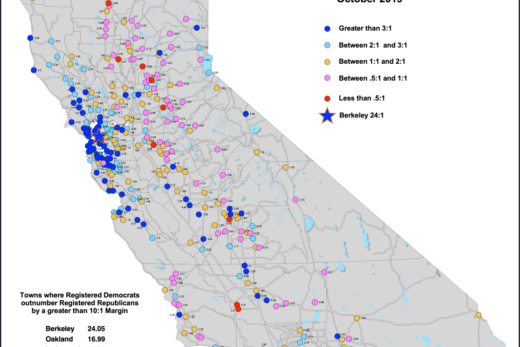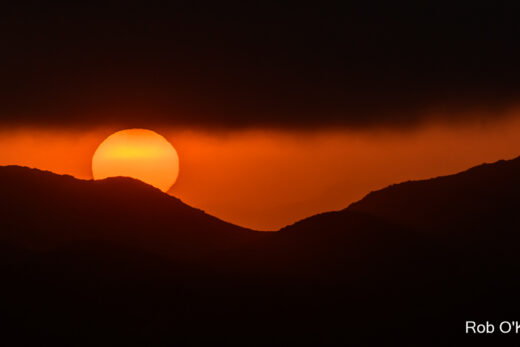Within our publication and web site, you will occasionally see stories inspired by presentations and field activities offered during professional conferences that include the AAG, APCG, and CGS. Here, we take you on a field trip organized by the California Geographical Society when we met in 2018 at Cosumnes River College in Elk Grove, just south of Sacramento. Since we are lucky to have informative links that should answer your questions and fill in the blank spots, we will stick to some field notes here and provide you with some images that share our discoveries at the Wakamatsu Farm in the foothills of the Sierra Nevada.

We start with the bus ride east from Elk Grove along Hwy 50 past Folsom and more distant exurbs and deeper into the foothills past El Dorado Hills and Cameron Park. We turn at Shingle Springs Rd. toward Four Corners and Gold Hill. This will land us just a few miles from Marshall’s pivotal 1848 gold discovery that would drive one of the last nails into the coffin of Native American cultures in this region.
The Nisenan people lived here for thousands of years among the understory of grasslands that blanketed rich soils and a peppering of gray pine, oak, and shrubs that become denser clusters on the moist, shadier, north-facing slopes and riparian habitats and then blend into the forests of the loftier Sierra Nevada just to the east. Typical of California’s Native Americans beyond the Colorado River Valley, the Nisenan people didn’t practice agriculture. But they worked with nature by using fire and other ecosystem manipulations that resulted in more successful hunting and gathering.
During the 1850s, the landscape was quickly transformed to orchards and vineyards that served the Gold Rush. By 1869, owner Charles Graner sold his Gold Hill Ranch to people who had fled turmoil in the Aizu Wakamatsu province. This would become the first Japanese settlement in North America and, eventually, the gravesite of the first Japanese woman to be buried in the Golden State.
The 272-acre Wakamatsu Tea and Silk Farm Colony name properly reflects the Japanese crops and agricultural traditions that were introduced here. Only a couple of years later, drought, water pollution form the gold fields, and dwindling financial support killed the dream. And though the farm was sold to the Veerkamp family in 1873, the farm may have been the first clue that in less than 30 years, by 1900, Japanese Americans would be producing more than 10% of the state’s agricultural products and would become major players in California farm production through the 1900s.
The Veerkamp family (during 140 years of ownership) set the stage for the farm we see today, as they mixed crops and animals until it evolved into a dairy farm that would eventually face new struggles. By 2010, the American River Conservancy gathered the necessary resources ($3.2 million) to purchase this land with its celebrated history and its potential to educate people about the importance of cultural history, sustainable agriculture, and resource conservation.
On April 27, 2018, Melissa Tregilgas and her husband and three kids gave us a tour of the roughly 95 acres of this 272-acre ARC property. Melissa tells us that she and her husband were interested in foods and how they were grown and they wanted to share the farming experience with their kids. They didn’t take to growing vegetables. But they became interested in animal agriculture. They started learning about animal welfare on a Maryland dairy farm, noting how their dairy cows’ relationships to farmers were very different from commercial agriculture.
One calf is born each year to the Jersey breed of cows grazing here. Jersey cows are particularly versatile and docile, can adapt to many different environments, and they produce a lot of milk. The females live for about ten productive years. The bulls become too aggressive and destructive after only 2-3 years, when they must be slaughtered. There is plenty to graze on here until late summer, when Jersey diets must be supplemented with expensive alfalfa hay. Electric fences are gentle reminders that train the cows’ wandering ways on this animal-care oriented farm that includes sheep. Hands-on experiences unveil details about animal health and safety, such as how rattlesnake bites are only dangerous if the animal is bitten on the face.

Grazing here is carefully managed and controlled to increase productivity and fertility, as plants are allowed to “rest” following each graze. You will notice plants such as popcorn flower, fiddleneck, vetch, nonnative rye, nonnative brome, and others resembling wild oats competing for light and nutrients in this crowded grassland below the scattered stately oaks. Dung beetles play important roles by burying balls of cow dung deep into the soil for their egg nutrition that also enriches the soil, one of the reasons bug-killing chemicals are not used here. Carbon is returned by healthy grazing that can stimulate carbon sequestration cycles, decrease soil compaction, and encourage diversity. The Free Hand Farm family has formed personal relationships with local families looking for healthy, nutritious milk, eggs, and other organics produced by farmers taking the long-term view, though these sustainable practices and foods may have higher costs in the short term. The farmers and families are rewarded with more peaceful lives connected to the land in a bucolic landscape quite foreign to most city folk.
The Bear and The Bee Farm that extends across the street includes experiments with organic produce and a native plant nursery. Produce from there and the milk, lamb, wool, and egg products from the Free Hand Farm we have just toured contribute to mortgage payments and necessary maintenance of the property. The American River Conservancy continues exploring better ways of interpreting the cultural history and providing public access for years and generations into the future. Since a lot of hard work is required to run these farms (try getting up before sunrise every day to herd and milk the cows), you are required to schedule a tour if you want to see this place. ARC, reaching out to find more participants and contributors, listed this number for more information: 530-621-1224.
Wakamatsu Farm is one more example of how thousands of small family farmers throughout the Golden State are encouraging sustainable practices quite different from some of the largest commercial farms in the world. They have all earned our attention in this most diverse and productive agricultural state. And to think that at this site, it all evolved from those first Native Americans, the Gold Rush, and the first Japanese settlers.
It is fitting that we ended our accompanying images with a photo of Jeanne Wakatsuki Houston, author of Farewell to Manzanar. She wrote about her experiences in the Owens Valley Japanese internment camp (a national historic site) on the other side of the Sierra Nevada, more than 70 years after the Wakamatsu Tea and Silk Farm Colony days. By 2018, Jeanne Wakatsuki was still sharing her own experiences and perspectives more than 70 years after Manzanar, and nearly 150 years after that first Japanese settlement in gold country.
The late, great California Librarian and historian, Dr. Kevin Starr, wrote the following essay (click the first link below) just before the American River Conservancy acquired the Wakamatsu Farm land. Here, he makes insightful connections between Japanese and California history, the evolution of agriculture in our state, and valuable lessons that can guide us into the future. Note how he appreciates the power of place in his “Wakamatsu Tea and Silk Farm Colony at Gold Hill”
You might want to continue your journey with these other sources that shed light on this place in the Sierra Nevada foothills, a landscape rich in cultural and agricultural traditions and historical lessons:
- Wakamatsu Farm News
- Wakamatsu Tea and Silk Farm Colony (Nol. 815 California Historical Landmark
- Wakamatsu Farm: America’s First Japanese Settlement
- History of the Wakamatsu Tea and Silk Farm Colony




